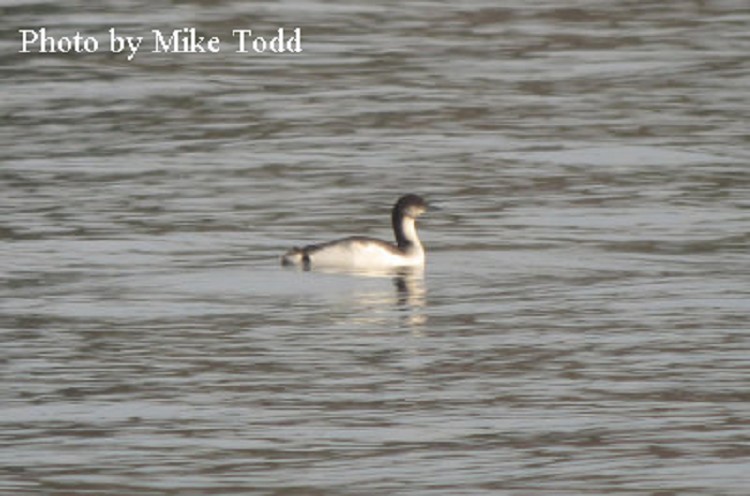Pacific Loon
Gavia adamsii
The Pacific loon is one of five loon species in North America. Closely resembling the Arctic loon, the two loons were considered to be the same species until recently. This small to medium size loon prefers to live and hunt on deep waters and seldom comes onto land except to nest.
Considered one of the most abundant loons in North America they can occasionally be seen in winter on one of Tennessee’s large, deep lakes.
Description: Medium size loon with a dark gray back on a long body, dark “chin-strap” or “necklace” on a white throat, dark rounded head, thin pointed bill.
Length: 25 inches
Wingspan: 36 inches
Weight: 3.7 lbs
Voice: Generally silent. On breeding ground has a series of yodels and croaks.
Similar Species:
- Common Loon - a thicker bill, darker face, faint pale color at neck, broken neck pattern
- Red-throated Loon – upturned bill, dark back, distinct line of black and white on the neck with a lot more white.
- Double-crested Cormorants – Longer neck, blunt-tipped bill, no white on chest or throat.
Habitat: In Tennessee, Pacific Loons can occasionally be found on freshwater lakes.
Diet: Fish and aquatic invertebrates.
Nesting and reproduction: There are no known records of this species nesting in Tennessee.
Status in Tennessee: The Pacific Loon is occasionally found in winter in Tennessee.
Fun Facts:
- Until recently the Pacific Loon and the Arctic Loon were considered to be the same species because they are so similar.
- Like other loons, the Pacific Loon has a difficult time walking on land, and cannot take flight from land at all. It requires open water to take flight, flapping and pattering across the surface.
